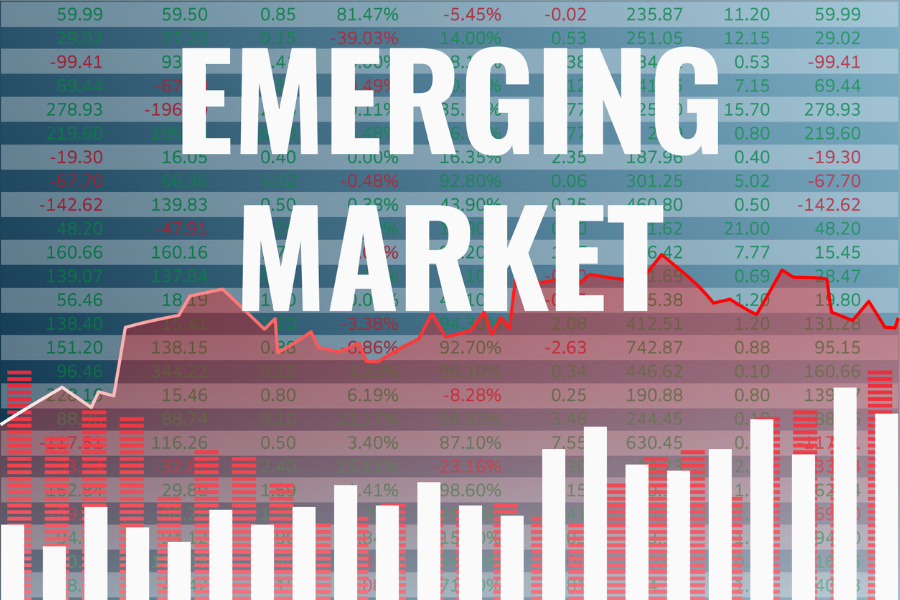

Money managers are digging in their heels over a popular emerging-market bet in early 2024 even as the trade has unraveled five months into the year.
Local-currency debt from developing nations has been roiled by odds of higher-for-longer interest rates in the US and a strong dollar. A Bloomberg index of local securities is down 1.1% year-to-date, while a similar gauge of hard-currency debt is up 1.2%.
But for Victoria Courmes at Grantham Mayo Van Otterloo & Co., who hailed local bonds as a “once-in-a-generation” opportunity in January, the local debt trade is far from dead. In fact, she says, it is more attractive than before. She argues that delays in interest-rate cuts by the Federal Reserve have forced central banks in emerging economies to postpone or slow the pace of their own monetary easing, widening real rates — which are adjusted for inflation — and offering investors better yields.
“Rates are still very high and that gap versus the US real yields has widened some more,” said Courmes. “It looks like actually EM rates are more attractive.”
The change of tack by EM policymakers was clear to see last week. Brazil’s central bank cut its benchmark Selic rate by a quarter-point, slowing after six consecutive half-point reductions. Policymakers in Mexico left rates unchanged, pausing after a single cut delivered in March, and Malaysia also held borrowing costs steady, citing risks from heightened market volatility as it braces for the growing likelihood that rates in the US will remain elevated for longer.
Romania, where the central bank sets borrowing costs later on Monday, is another test case. While a cut “seemed a done deal just a few weeks ago,” reasons for caution have now entered the picture, according to Valentin Tataru, a Bucharest-based economist at ING Groep NV’s local unit.
The local-currency bond trade turned sour after a resilient US economy and stubborn inflation led traders to slash the number of cuts priced in for 2024, boosting the appeal of the greenback. The Bloomberg dollar index is up 3.4% so far this year, a reversal from the 2.7% decline seen in 2023.
The subsequent decline in emerging-market currencies was enough to persuade many to ditch the local EM debt trade. The $2.8 billion VanEck JP Morgan EM Local Currency Bond ETF recorded its fourth week of consecutive outflows by May 3, the longest streak since the onset of the pandemic in March 2020, according to data compiled by Bloomberg.
Now, early evidence the US economy may finally be cooling — employers scaled back hiring in April and the unemployment rate unexpectedly rose — could further boost the trade, easing pressure on rates and potentially resulting in a weaker dollar, according to Carlos de Sousa, an investor at Vontobel Asset Management in Zurich.
“We’re probably closer to an inflection point,” de Sousa said. “The probability of that scenario finally materializing is a little bit higher than it was a couple months ago.”
His tentativeness echoes a broad tone of caution among investors. Markets, which largely started the year predicting the dollar would decline, have been forced to rethink as US inflation and rates remain at generational highs and the world is mired in geopolitical conflict.
“We’re still in the same dollar cycle, which has been characterized by US exceptionalism,” said Chris Preece, a portfolio manager at Pictet. “Robust growth and hawkish monetary policy on a relative basis, global conflict, all of these things lead to the virtuous cycle for the dollar.”
The way investors have found to still bet on local-currency debt while hedging for dollar strength is to pick spots rather than go all-in. JPMorgan Chase & Co. likes liquid markets like Mexico and Brazil and also nations such as Egypt and Turkey for attractive yields, while staying market-weight on the broad asset class.
Patrick Campbell, a portfolio manager at Eaton Vance Management, says favorite bets include local debt in Uruguay and Dominican Republic, which are more insulated from broader macro issues, as well as Brazil, where rates remain “very high.”
“It’s one of the places that does pay a decent carry with a very good valuation story,” he said of Brazil.
While the Brazilian real has lagged most EM peers in total returns this year — adding to losses after last week’s deeply split rate decision — about half of 22 developing-nation currencies tracked by Bloomberg have gained by that metric. GMO’s Courmes says that gives reason for optimism, even as a gauge tracking developing currencies has fallen 0.8%. Currencies in Turkey, Mexico and Colombia are among the best performers in total returns in 2024.
“We’re happy to continue overweight in local,” Claudia Calich, the head of emerging-market debt at M&G Investments in London, said, listing Turkey, Romania, Mexico, Colombia and Dominican Republic among her favored bets. “I don’t think it’s horrendous. It’s just difficult to post very strong returns when you have such a headwind in rates.”

Relationships are key to our business but advisors are often slow to engage in specific activities designed to foster them.

Whichever path you go down, act now while you're still in control.

Pro-bitcoin professionals, however, say the cryptocurrency has ushered in change.

“LPL has evolved significantly over the last decade and still wants to scale up,” says one industry executive.

Survey findings from the Nationwide Retirement Institute offers pearls of planning wisdom from 60- to 65-year-olds, as well as insights into concerns.
Streamline your outreach with Aidentified's AI-driven solutions
This season’s market volatility: Positioning for rate relief, income growth and the AI rebound
